Another 46 hours with Assassin’s Creed Shadows, which I was sort of playing wrong
Ubisoft undermined their own excellent work on Shadows, but I have a tip to address that.
Here at Game File, I don’t publish many tips and tricks. No cheat codes. No walkthroughs. No step-by-step directions for clearing Astro Bot’s Great Master Challenge nor for defeating Elden Ring’s Margit The Fell Omen. Gaming tips are a staple of games media, sure, but not really my thing.
Nevertheless, I’ve got a good one that you might find interesting, even if you never play the game:
When playing Assassin’s Creed Shadows, Ubisoft’s massive March adventure set in 16th-century Japan, lay off the L2 button.
I’m talking about the left trigger, just to be clear(and, in case they ever port it to Switch 2, that’ll probably be the ZL).
This simple act of button not-pressing radically changed my impressions of Assassin’s Creed Shadows. I already liked it, but Shadows floored me, once my L2-abstinence showed me what Ubisoft’s developers had actually created.
My epiphany even got me wondering about the kind of video games that Ubisoft is capable of making and those they are willing to put out into the world.
Pretty deep, yes?
The no-L2 thing is weird advice, I’ll grant you.
I can’t think of any other game about which I’d recommend you avoid using a specific button. But for Shadows, it really is that simple: Don’t pull L2. Seriously. Don’t do it!
Or, if you want an alternate way to deal with this, I have a simple setting for you to change in-game. Turn off “Intuition VFX", which is a deeply buried option. Find it this way: System —> Options —> Interface —> VFX Customization —> Intuition VFX. Caveat: Changing that setting also deactivates some actually helpful features, as I’ll explain below.
Let’s back up…
Assassin’s Creed Shadows is a massive third-person action-adventure revenge tale set across a richly detailed swathe of feudal Japan. It’s a very impressive game that I gave a glowing review to back in March.
I liked how it introduced its playable lead characters, the vengeful shinobi Naoe and the enigmatic samurai Yasuke.
It controlled really well. I was especially impressed with Naoe, who can sneak through the shadows, climb across rooftops and utilize series-best stealth to quietly clear castles full of enemies.
It’s beautiful: Stunning architecture. Gorgeous nature. All enhanced by a technologically unmatched four-season cycle that alters the foliage and, in the winter, drops snow.

Shadows also wowed me with its mission structure, which may not sound very exciting but is crucially important for today’s big no-L2 tip. The game’s many assassination jobs—both the main story assignments and numerous side opportunities to eliminate allegedly incorrigible people—are organized via an “objectives” screen. This objectives board starts blank. As you play, it gradually fills with rings that show collections of quest-givers and groups of targets. Each ring of targets appears on the board with a flourish, once players encounter an in-game character who notifies them about the group. Sometimes, players will get a new ring to appear even if they just stumble across a clue in the game world or accidentally encounter one of the targets. Discovering a note in Kyoto, for example, can trigger the mission board to display a ring comprised of a sketchy samurai family. One man’s complaint in another town produces a ring teasing a conspiracy of merchants. Participating in a playful scavenger hunt eventually reveals a ring of kidnappers. And so on.
I knew and experienced all of this when I reviewed AC Shadows back in March. At that time, I was about halfway through the game’s main ring of 12 targets and had dabbled with several of the dozen or so smaller, optional rings of additional named foes—comprising more than 100 in-game targets to find and defeat.
I had appreciated the non-linearity of the objective board system. I enjoyed the serendipity of stumbling across a new ring of enemies and seeing them added to my board.
The mistake I kept making
What I didn’t appreciate, when I wrote the review, is that I’d already fallen into a bad habit that had undermined my ability to fully appreciate what Ubisoft’s developers accomplished with Shadows’ assassination system.
I don’t think it was my fault.
The problem, as alluded to above, is the L2 button. In Shadows, holding down L2 grants Naoe or Yasuke a sort of X-ray vision. This is useful, because the game’s towns, forests, temples, caves, docks, farms, and so on are loaded with loot and collectibles, all of which emit a yellow or white glow when pressing L2. If Naoe or Yasuke has raided a castle or is sneaking over a town’s rooftops, pressing L2 is handy for quickly spotting things that you can grab and use to enrich your character.
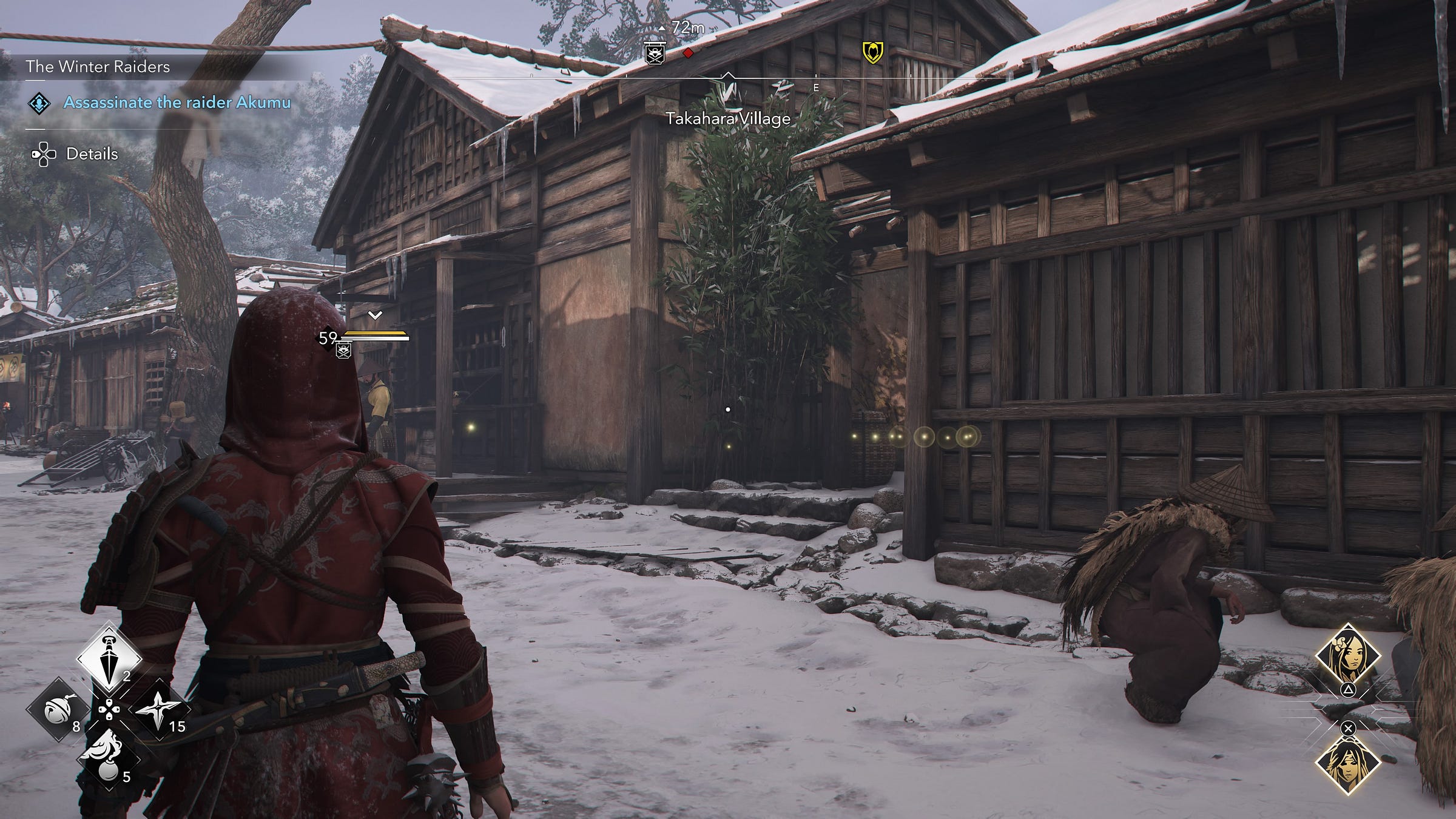
Unfortunately, holding down L2 also makes anyone who is an assassination target appear as a blue dot.
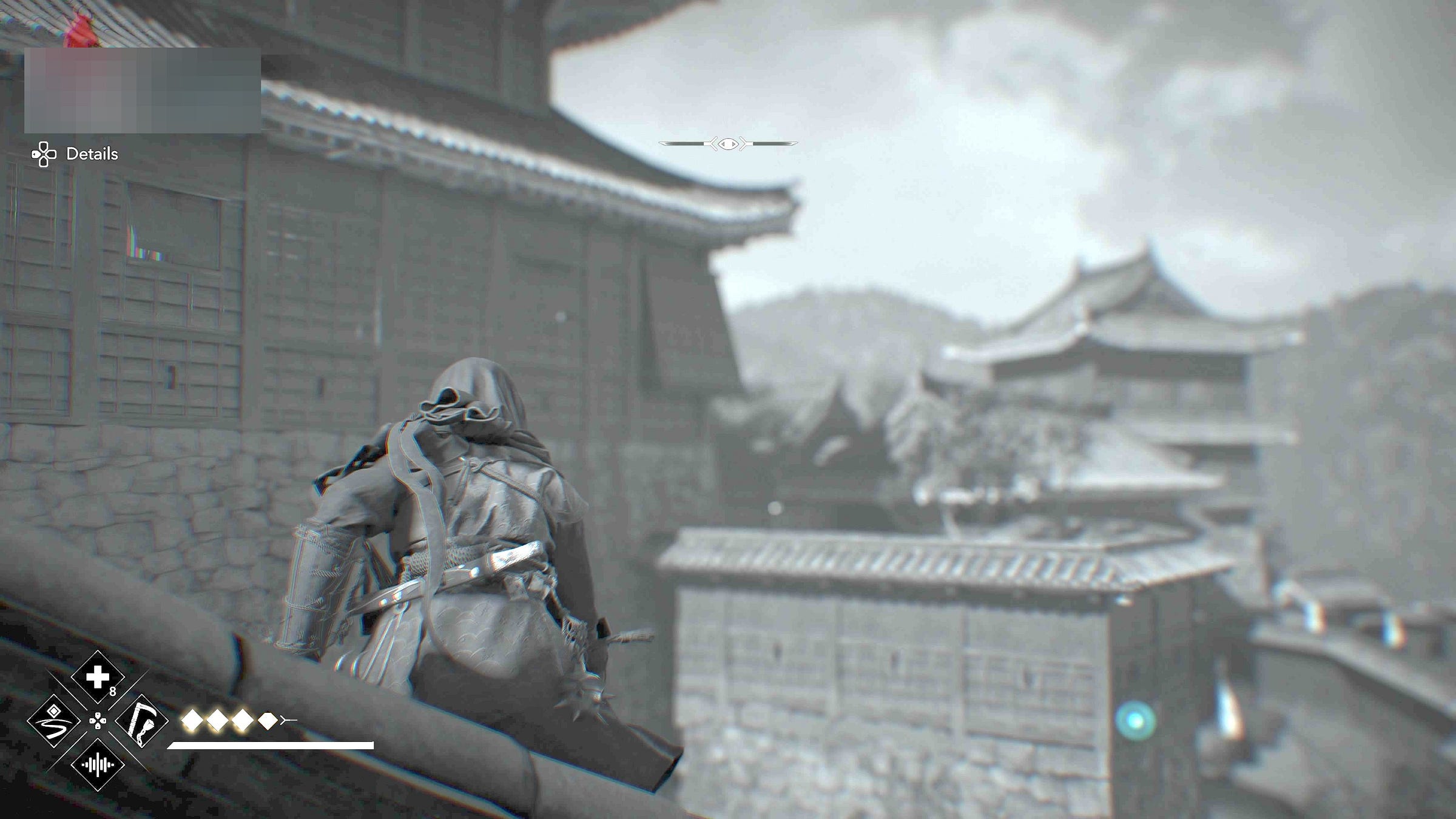
This is true for all potential targets, even the ones you didn’t know you were hunting and didn’t even know might be nearby.
Any of the game’s more than 100 assassination targets show up as blue dots even if they’re in the middle of a crowd.
They show up as blue dots when they’re practically on the other side of town.
I’ll show you an egregious example of this further below, to demonstrate how badly this undermines the game.
For now, bear in mind that these L2-triggered blue dots show up even if you’ve turned off the game’s “guided exploration” mode. Doing so theoretically deactivates Shadows’ user-interface helpers, mostly by changing how the game’s map works. It supposedly forces players to use their sleuthing skills to read clues and hunt down the game’s many main and optional targets. But the x-ray vision blue dots can still appear.
The only way to fully turn off the blue dots is to turn off the game’s deeply-buried “Intuition VFX” setting, though that then also removes all the gold- and white-dot glowing icons that help you find loot in the world.
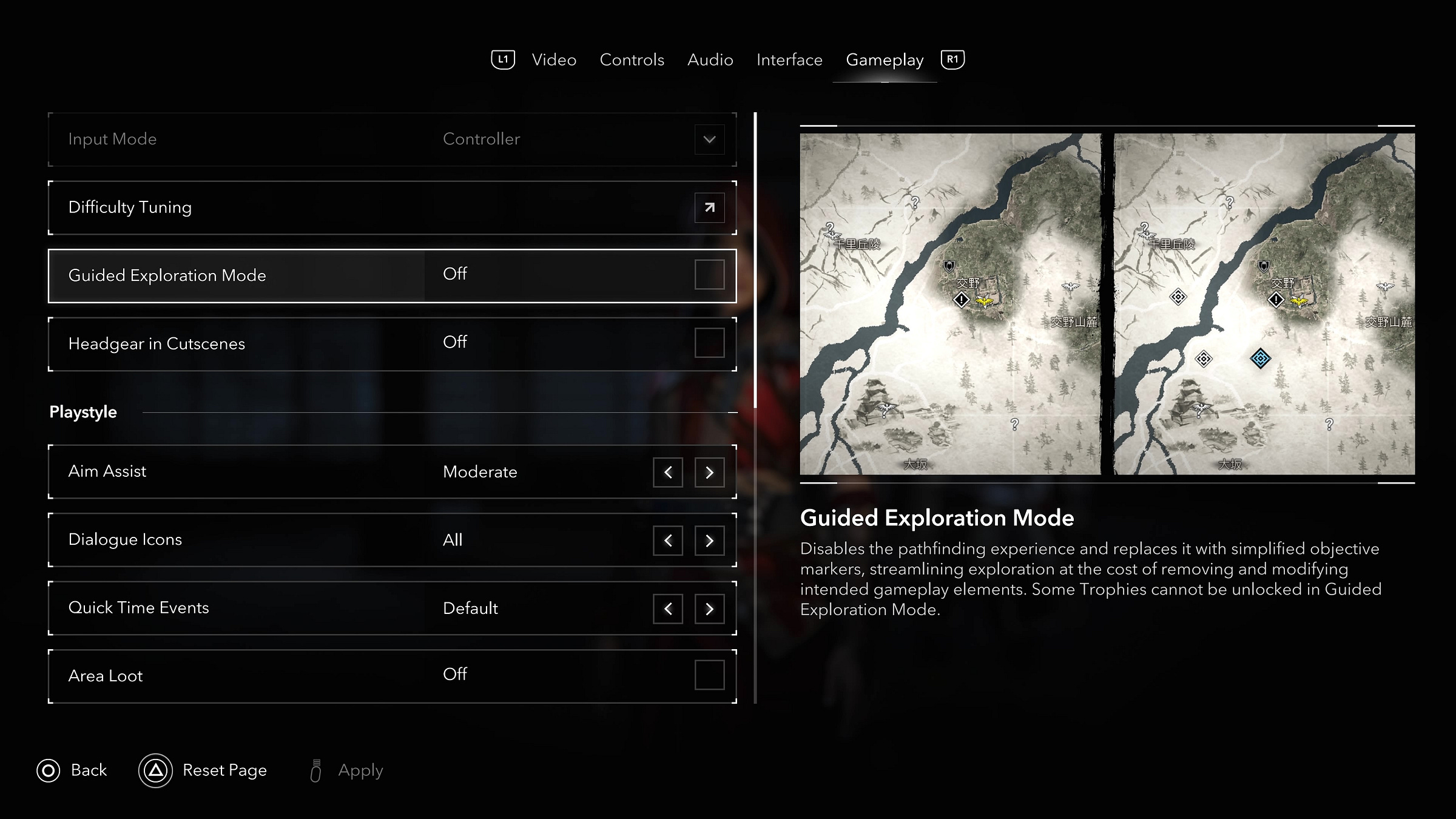
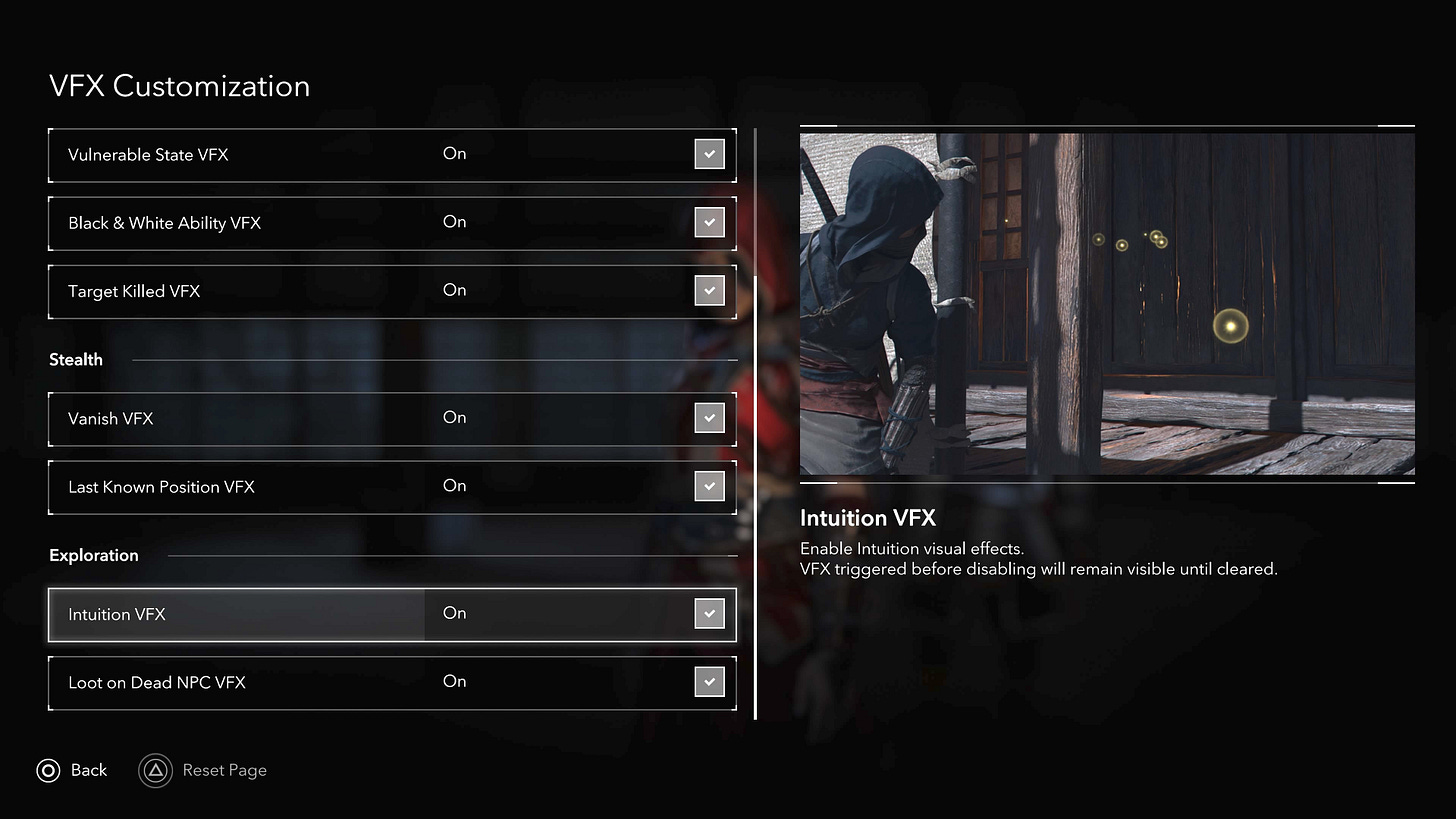
Learning to loathe the blue dots—and to avoid them
The x-ray vision blue dots that reveal each target make the game too easy.
They reduce Shadows’ assassinations missions to the simple process of pressing a button, spotting a distant blue light and walking up to it.
This is a shame, because, as I discovered during the 46 hours I played of Shadows after publishing my review, the blue dot system distracts players from the stunning amount of effort Ubisoft’s AC Shadows team put into making a game world that is designed for satisfying detective work.
It was in July, I think, when I’d pressed L2, saw a blue-dot target and then noticed, en route to attacking them, that the virtual townspeople I passed were talking about the guy. I slowed down and listened to them gossip about his corrupt leadership, that he lived nearby and that they hated him.
I completed the kill and then looked for another target on my mission board.
This next guy was meant to be in another town, so I went there and began walking around, listening to chattering townsfolk. I did not press L2, did not use my x-ray vision. It was hard to suppress the reflex.
I found some people talking. They mentioned where my target lived. I found his estate, climbed to a rooftop, looked around and spotted his likely home. He was there. I took him out and went back to the mission board again.
I soon got into a groove. No L2 for me. I just read the clues on my mission board, loaded the area my target was expected to be in, walked around and observed. I was a detective. I was exploring. I was on the hunt.
The more I listened, the more I heard. Shadows’ world, I discovered, is full of people dropping hints about your targets. It’s legit impressive once you pick up on it.
With this new approach, I gained a better appreciation for how distinct each target ring was. All of the enemy targets on the “Corrupt Daimon” ring on my mission board, I realized, were based in towns, many in guarded estates. A ring of “Shinobi” targets were each tied to different elements; I found a fire-wielder near a burning pagoda.
As I played with more focus and intent, I started noticing that some rings had specific gameplay themes. Sure, I’d understood that one ring of targets only showed up in the winter and one involved duels with students of one of Yasuke’s teachers. But I hadn’t fully absorbed that each of those duels involved a different weapon Yasuke has to master over the course of the game. And I was pleasantly surprised when that ring of duels had its own narrative arc and unexpected conclusion. (It turns out that many of the skippable side-target rings have their own mini-stories).
An example of the better way to play to Assassin’s Creed Shadows
Let me show you how much better a no-L2/no-Intuition-VFX playthrough of Shadows is. I’ll describe a small adventure I had in the game just this morning as I prepped this article.
I had already completed most of the assassination rings in Shadows, but I had a few targets remaining in a circle called the Winter Raiders. That’s the group that only emerges in the winter.
I had yet to find a target named Akumu, so I took note of the clues for her on the objective board and began my hunt.
All I had to go by were two things:
“She operates in Kii in winter”
“She is in central Nakahechi Route”
Cool. Using Naoe, I fast-traveled to a hideout I’d unlocked in Nakahechi Route and then began walking through the surrounding town.
I saw people standing in front of buildings, some shivering from the cold. One man played a musical instrument.
I refused to press L2, but I started to feel stressed.
No one in town was talking about Akumu. The civilians were silent, and I was beginning to doubt my own advice.
I walked up another street. Still nothing.
Down another. Nothing.
Hmm. Maybe I could press L2 this one time? No!
I checked the map and saw that, yes, the town I was exploring really was in central Nakahechi Route. Where was Akumu?
I decided to leave the town and had Naoe walk up an inclined path toward the forest. As she walked, just outside the main town gate, it was getting dark. I noticed a nearby torch, just off a side-path.
I walked onto that path and saw another burning torch and a bonfire further uphill.
Huh.
Getting closer, Naoe automatically said: “Looks like a camp. I should stay out of sight in case they are hostile.”
Sure seemed like the developers were hinting at something!
I made her crouch and approach.
Soon, I could hear a woman’s voice from the campfire: “Very good,” she said to someone else. “It seems you heeded our lessons, recruit. Why do we strike at winter?” The subtitles gave it away. This was Akumu talking.
“Winter is when the villagers are at their weakest,” the recruit replied. “When help is hardest to find.”
“When you were betrayed,” a recruit said (not sure if it was the same one).
“And, most importantly,” Akumu said, “When their storehouses are at their fullest.”
She added: “But something about this year feels different.” That was me she was talking about, right? She must have heard rumors about Yasuke and Naoe’s activities! That was a neat touch.
“I will devise alternate routes. In case they’re faster,” the recruit said.
“Good,” Akumu replied. “Impress me.”
The campfire was set beneath a rocky outcropping. I made Naoe sneak to the top of it. From there, I could see Akumu’s recruits below, though not Akumu herself.
I snuck around, found her and attacked.
Later, when I tested this encounter a second time to see how else it might play out, I approached from the opposite direction and tried to use my grappling hook to swing from a tree, over the campfire and onto Akumu and her followers for a deadly strike. It didn’t quite work out, but made for an exciting attempt.
I killed her, and I picked up an additional clue for another Winter Raider target. The menacing Sobei, I learned, doesn’t just target the poorer area’s of Kii’s Gobo district. He walks there, surrounded by bodyguards. A handy clue for spotting him! No blue dots would be needed.
But that’s how it played when you don’t press L2 while looking for Akumu. If you do, it’s way less interesting.
I went back to a recent save point and re-loaded Shadows prior to my discovery of Akumu’s hideout.
This time, as I had Naoe leave the town and walk up an inclined path toward the forest, I held down L2.
Holding L2 would have already killed the tense vibe of my earlier investigation. I could have used it to quickly scan the town and recognize that Akumu wasn’t there. If you’re playing on deadline, maybe that seems helpful, but it otherwise squanders so much of the superb detail in the down. The blue dot x-ray view would have stopped me from being suspicious of some loiterers, and kept me from stopping to listen to a musician as I wondered if he knew of Akumu’s location. It would have made me pay less attention to everything Ubisoft’s developers had put in the town, because a quick L2-enabled scan of my surroundings would have shown that none of it mattered for my hunt.
As I exited the town, as I held down L2, I turned the camera toward the suspicious torch and the path that led to the campfire.
Before Naoe or Akumu said anything, before I spotted any of Akumu’s recruits, as I held L2, the blue dot appeared.
See it in the middle of the screen here?
That little dot with the line above it is Akumu’s location, seen through rock before anything that I described above happens.
If you’re playing Assassin’s Creed Shadows mindlessly, as I’d begun to after 40+ hours, you likely would have reflexively pressed L2 to find Akumu, and you’d have spotted her with x-ray vision in just this way.
At that point, you’d be tempted to just rush toward her, past her recruits, disregarding any of the dialogue I shared above. No reason to pay any attention to her discussion about the winter, nor her worry that something is more dangerous this year.
You’d just connect with the dot and kill her, then find the next.
What’s going on here?
Back in the old days, video games did not hold your hand nor tell you exactly where to go. There were hints in the instruction manual, but Super Mario Bros. didn’t tell you to jump on top of enemies to defeat them and Zelda didn’t tell you which way to walk.
Over time, more games gave players tutorials and tips. Plenty of that was welcome, but some games cultivated a mindlessness in their players, a dependency on following carrots to get rewards.
It’s widely agreed that FromSoftware’s punishing, mysterious 2009 sword-and-sorcery adventure Demon’s Souls swung the pendulum the other way. That game did not explain many of its challenges. It killed players’ characters frequently. It may have included a system that enabled players to leave hints for each other, but its opacity was generally valued and celebrated.
Plenty of Assassin’s Creed games showed their players where to go and told them what to do next. But, many entries in, they began offering options to make exploration more organic and to remove handholding.
Assassin’s Creed Shadows appears to have been constructed to swing even closer toward Dark Souls and other games not holding guiding players by the nose. Look at that rundown I presented of my hunt for Akumu and how I had to pay close attention to the Ubisoft’s game world to find her. The Akumu mission I described above isn’t unique. Once I’d stopped using the L2 x-ray vision, I discovered that every target I pursued had in-world clues to help me find them. Remember, there are more than 100 such targets in the game.
And yet…
Even though the game has a “guided exploration mode” that points players exactly to objectives, and even though that can be turned off, the x-ray vision button press that waters down the game’s core assassination gameplay can’t be disabled.
Even worse, Shadows is programmed to urge you to press L2 and literally look past the great scattering of in-world clues. Look at what appeared on the right side of my screen earlier today, as I snuck up on Akumu:
The game was encouraging me to use L2 to observe my surroundings!
If I’d taken that advice, I would have stopped listening to the characters in the world, stopped sneaking around to identify Akumu’s location and would have just seen right through some rocks and detected her, magically, as a blue-dot target.
The game was advising me to press a button that’d essentially deprive me from appreciating the work that Ubisoft’s developers did to craft this very encounter. One design decision to over-tutorialize and give players an extraneous super-power was trivializing the other work done in this section of the game.
I ignored the prompt, of course, because by this point, I knew the better way to play Shadows.
Finally finding the best version of the game
What I wrote about Assassin’s Creed Shadows in March still holds up to me. The game is beautiful, controls well and I find its two lead characters interesting. But when I returned to the game, as I kept pressing L2 and chasing blue dots at 50 or 60 hours in, Shadows began to feel tedious. There was too much mindless game here, I felt. I was more than ready for it to be over.
Then I had my epiphany. And then I played the rest of the game the way I encountered Akumu today.
That version of Assassin’s Creed Shadows played out for 30 more hours. It is easily among the best Assassin’s Creed experiences I’ve ever had.
So, don’t do it. Don’t press L2. Or dig into those menus and turn off Intuition VFX.



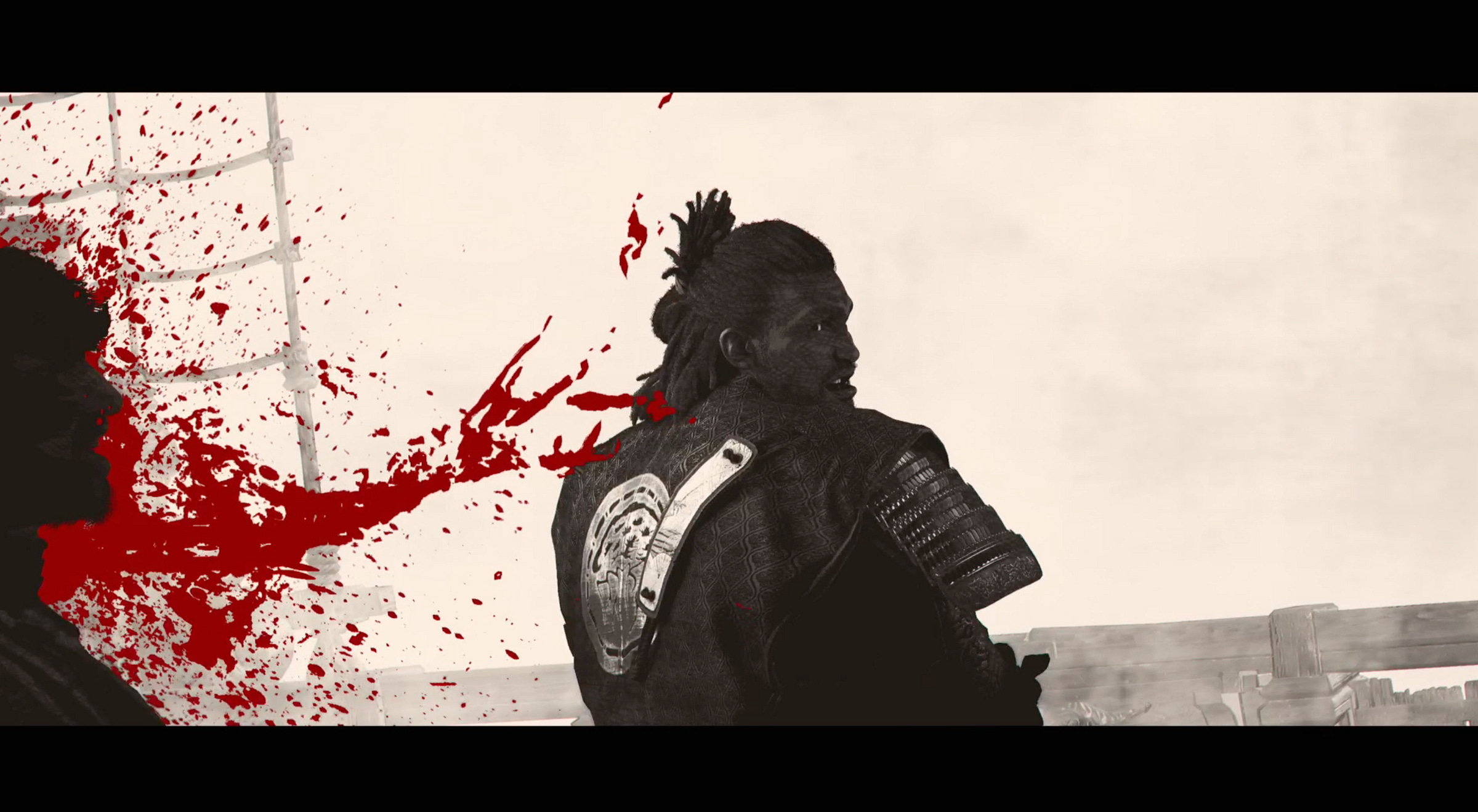

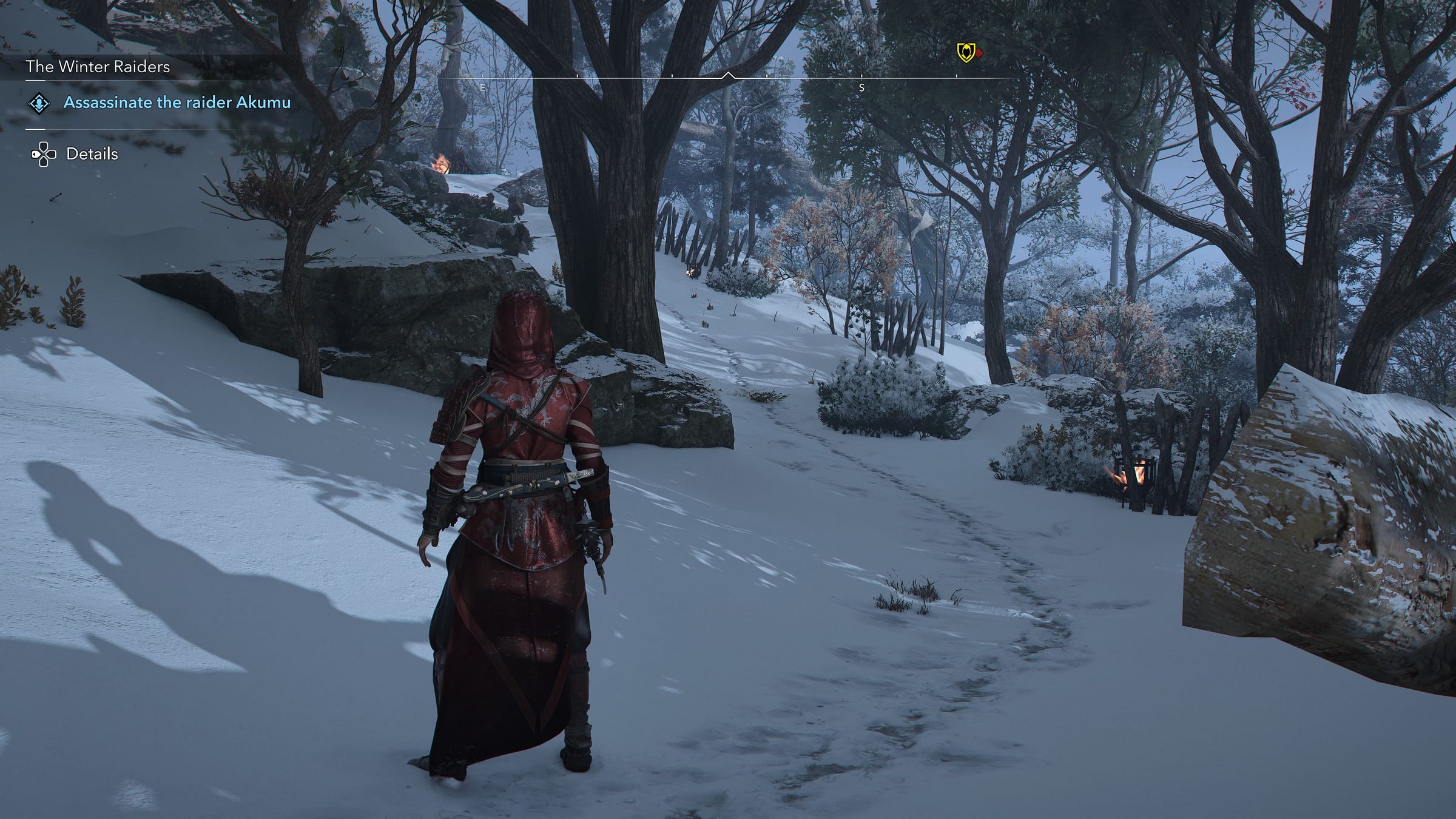
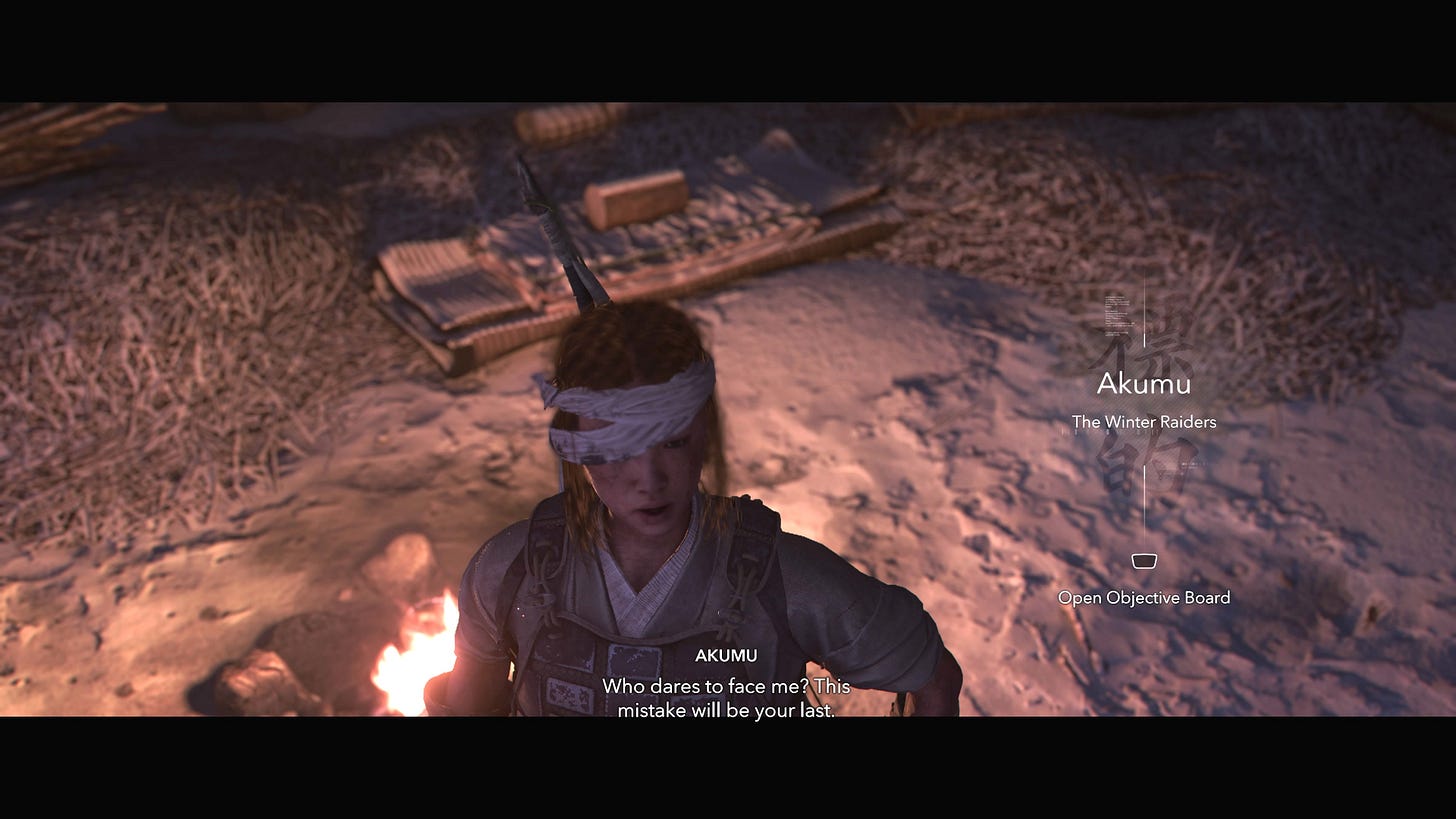
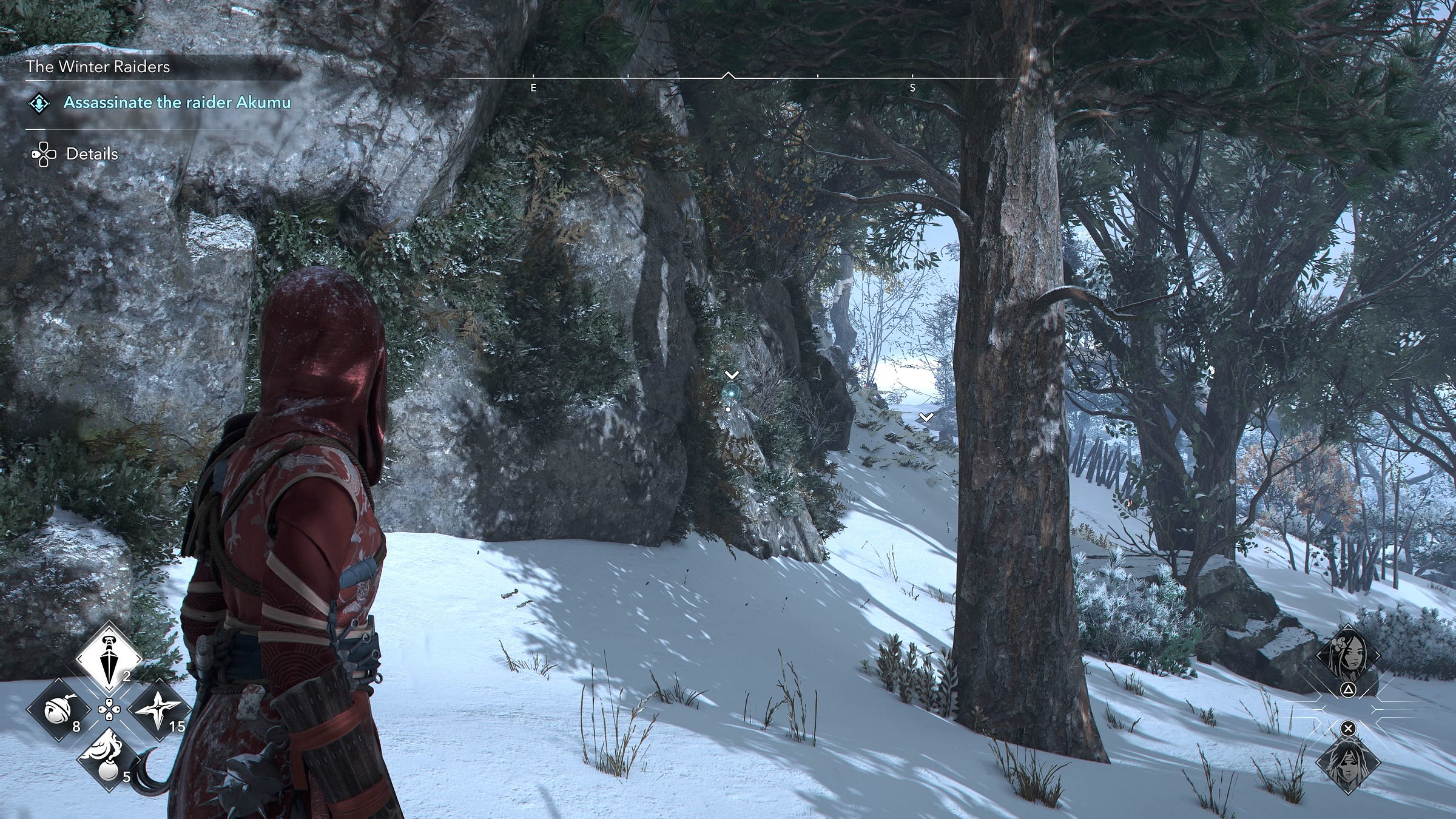
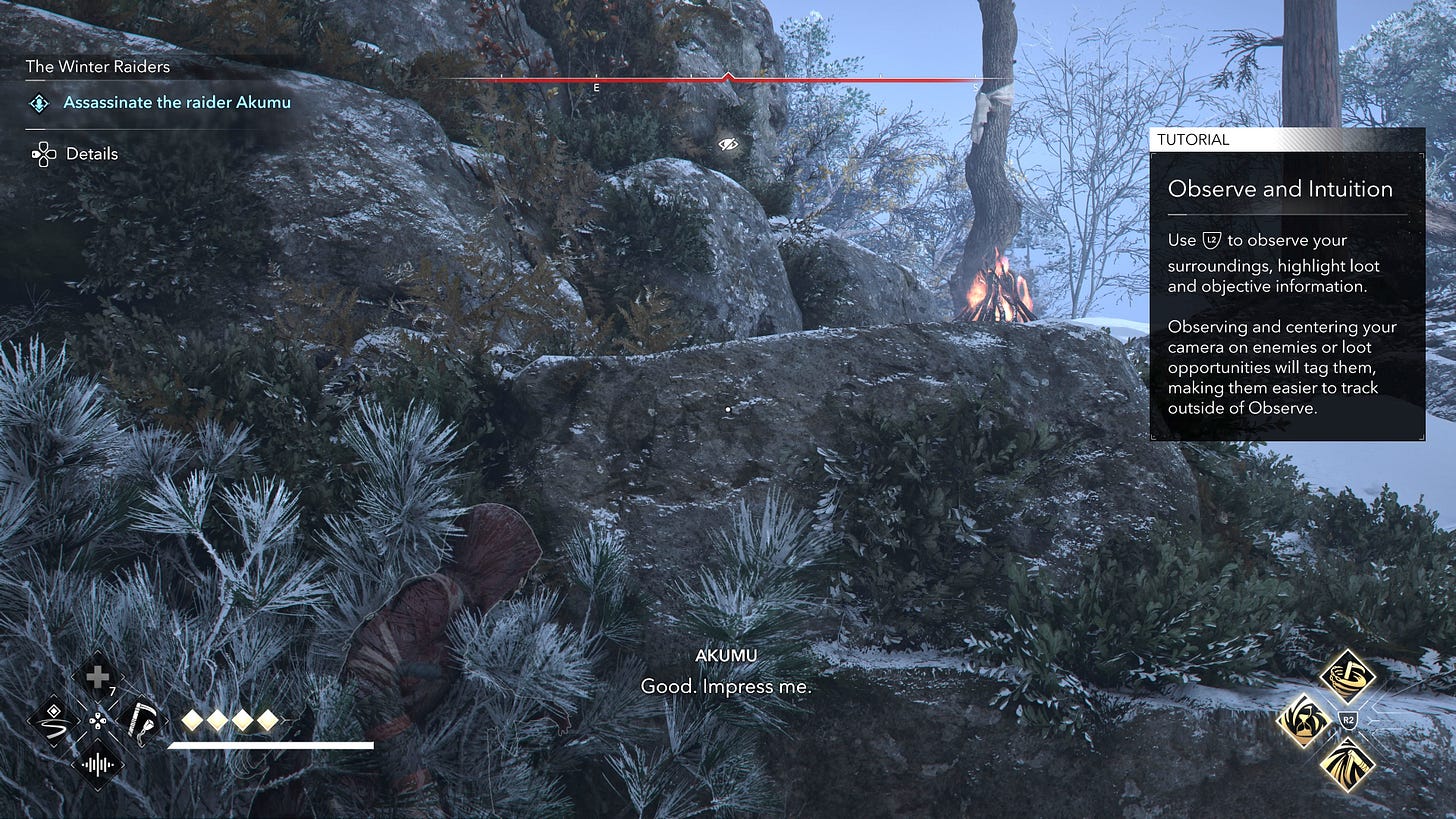
This is peak. The only reporter going this deep into Ubisoft games haha
I've 224 hours played in Shadows (just checked), and checked off the platinum trophy - as I did with Unity, Syndicate, Origins, Odyssey, Valhalla and Mirage. I've played all earlier ones on 360 or could not bear the MP grind. I'm looking at you, Black Flag.
That said, I'm not sure that Shadows is a better game when not playing with L2. The lackluster writing does not change, the aborted story right in the middle does not change, the overabundance of circles does not change ("I hate this group, go kill 100 for me."). Romantic quests just end suddenly, with no further communication between hero and love interest. And while the world looks stunning thanks to seasons and the systemic weather system, it's empty. There is no incentive to explore it, not even a chest with the odd reward in the middle of the forest. Don't get me started on forests on hills.
Another weak point: Japan isn't as familiar series location as Italy or Greece, so let's check the codex, right? Well, the codex needs editing badly and abandons all sorting logic. When every friend and foe was listed in the same branch in Valhalla, some - not even all! - characters are now distributed all over the place. Never mind the codex writing is so very boring, compared to the snarky-entertaining way Shaun Hastings would write the entries in all other AC games. And it's still buggy, I see "new entry" markers when there are no new entries.
The icing on the cake is the complete abandonment of the reason we've been time traveling since 2007. Neither does the Valhalla modern day cliff hanger get resolved, nor does the game tell us what's happening in the trippy "in between" passages - unless we play months upon months of weekly quests to unlock written notes. There were more notes and material to pore over in Black Flag and Rogue! There were more location puzzles in the Ezio trilogy!
And no, I'm not tired of the series after almost 20 years either - I finally played Odyssey's Atlantis DLC and Valhalla's Ireland and Paris DLCs last month. What a difference! Ireland and Paris almost look as pretty as Japan, too, minus the seasons and the PS5 weather. Plus much better writing.